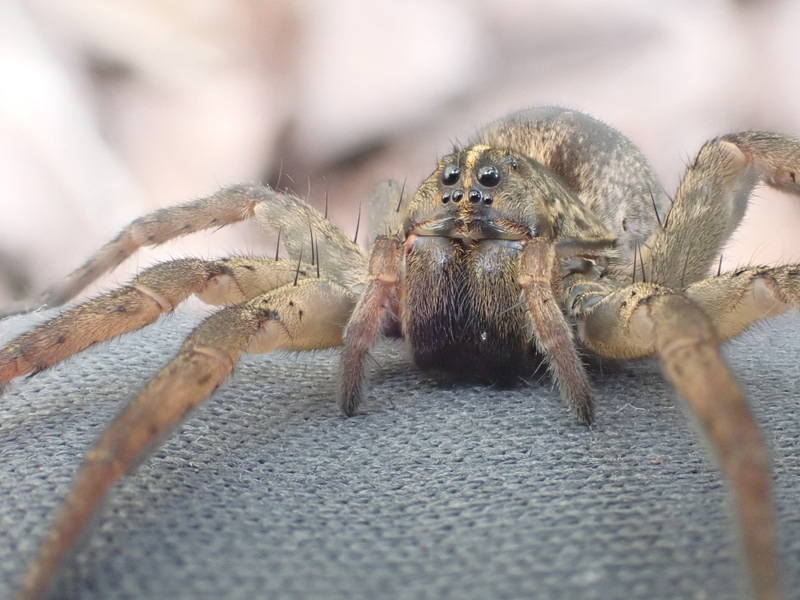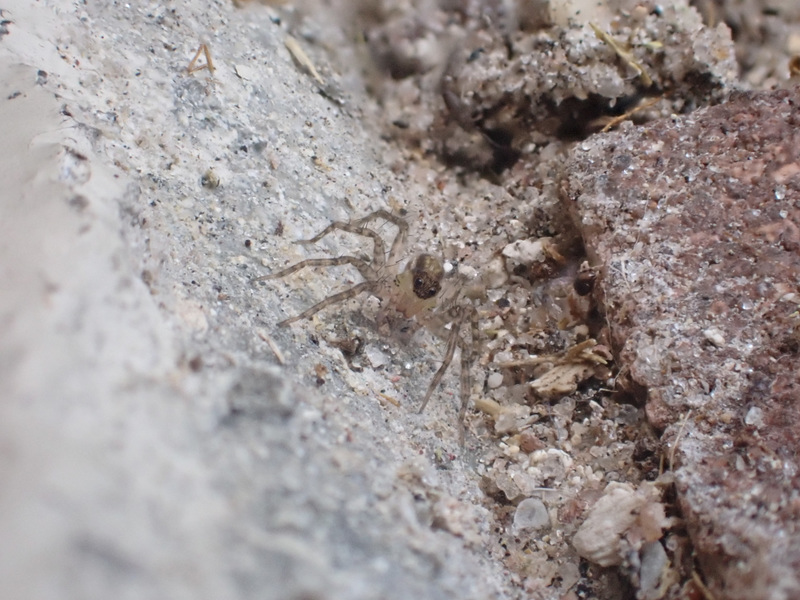There are over 2,000 species belonging to the family Lycosidae, commonly known as Wolf Spiders. Wolf Spiders vary in size and coloration, but there are two things all of them have in common. One is their incredible speed and agility, and the other is the huge front pair of eyes. This combination of speed and sight is perfect for chasing down prey items, such as crickets, cockroaches, and other spiders, and when the roles are reversed and the wolf spider becomes the intended target of a predator such as a bird or lizard, help the spider make a speedy getaway.

The front end of a Tiger Wolf Spider (Hogna aspersa). Notice the large front eyes.
Wolf spiders are very common, living on every continent except Antarctica. They range in color from black to almost white. One species, Hogna carolinensis, even has orange chelicerae! Wolf Spiders are usually not that big, and often go unnoticed, although some species can get 2-3 inches in length! Wolf Spiders are commonly mistaken for Brown Recluse Spiders (Loxosceles reclusa) because of their brown color, and because some have a violin shaped mark on their cephalothorax, which is considered trademark of the Brown Recluse. The best way to tell these two spiders apart is to look for the large eyes of the wolf spider.

A small juvenile Thin-Legged Wolf Spider. It’s coloration blends in perfectly with the background.
The venom of a Wolf Spider is not dangerous, but i can be mildly painful if you are bitten. Wolf spiders are commonly found in or around houses, especially where there is moisture readily available, such as bathrooms and basements. Though they look intimidating, Wolf Spiders are extremely beneficial, as they kill and eat many pest insects, such as cockroaches and beetle larvae. If you want to easily find Wolf Spiders, go outside to an open field on a warm, summer night and shine a flashlight on the ground ahead of you. Their large front eyes will glow back at you!
Recent Comments